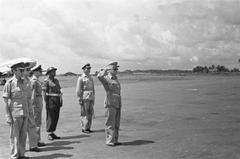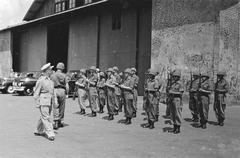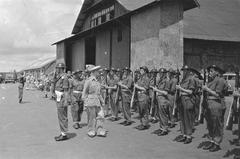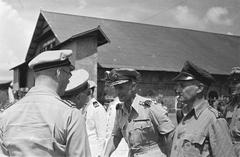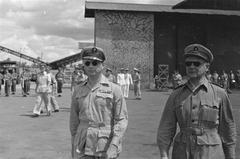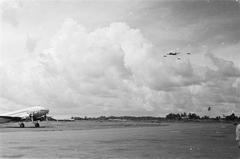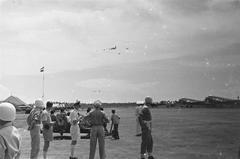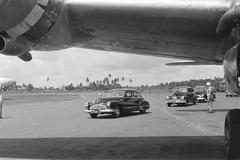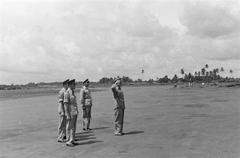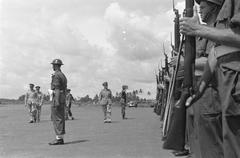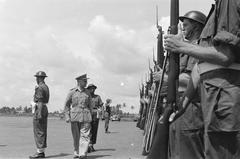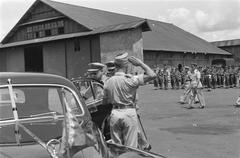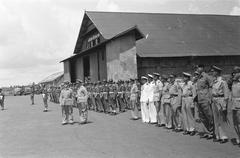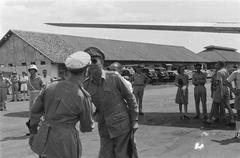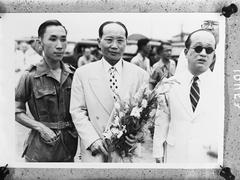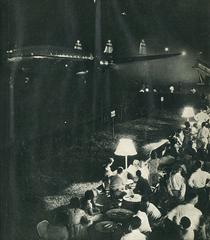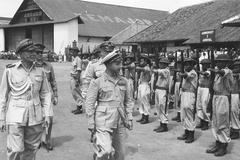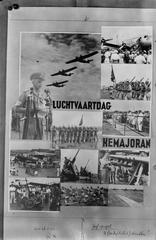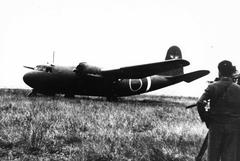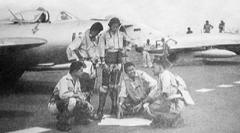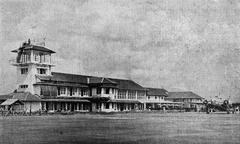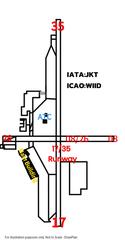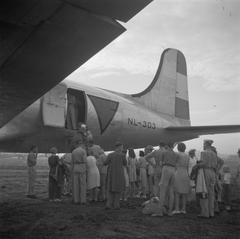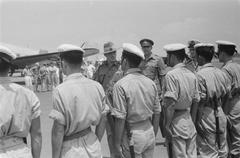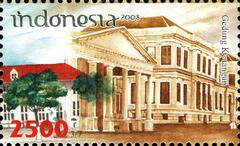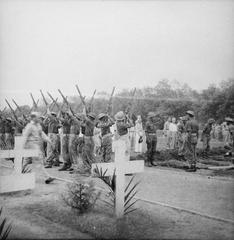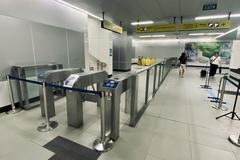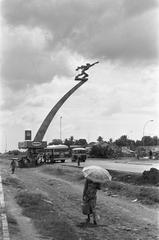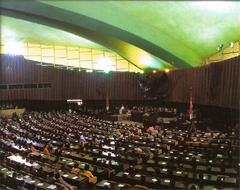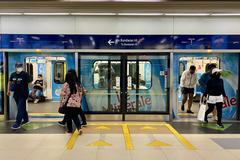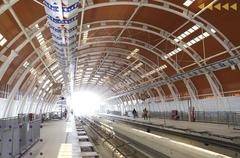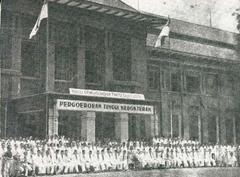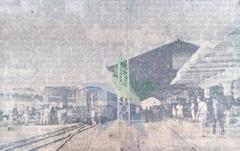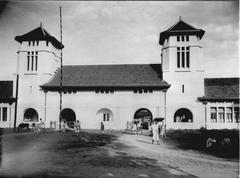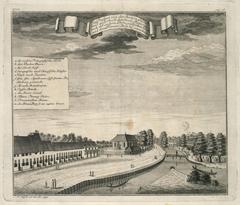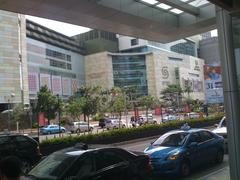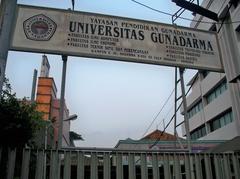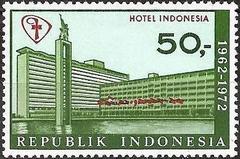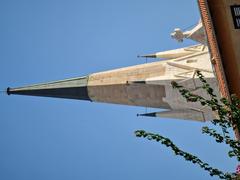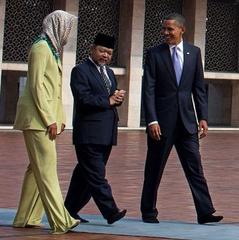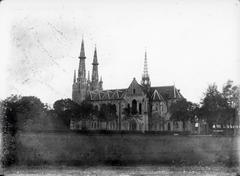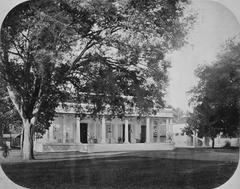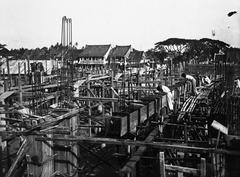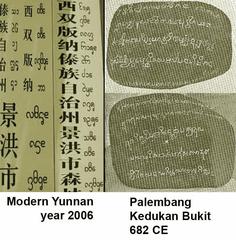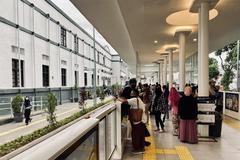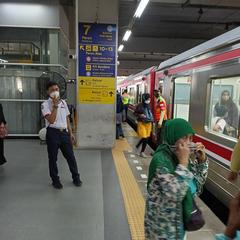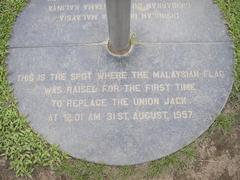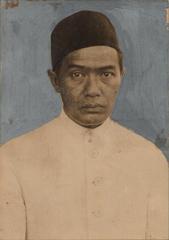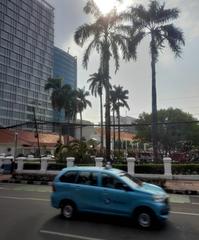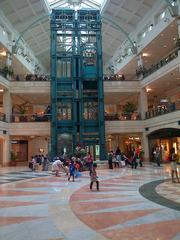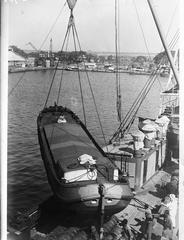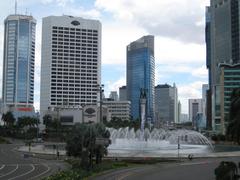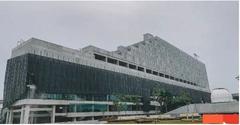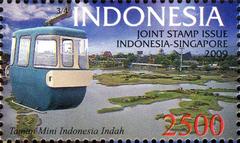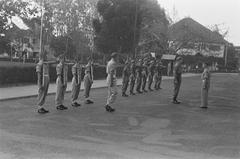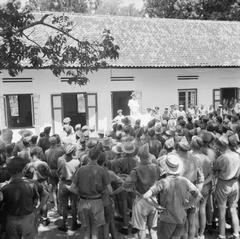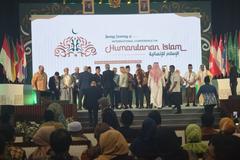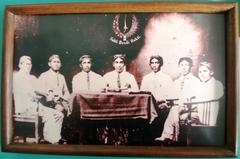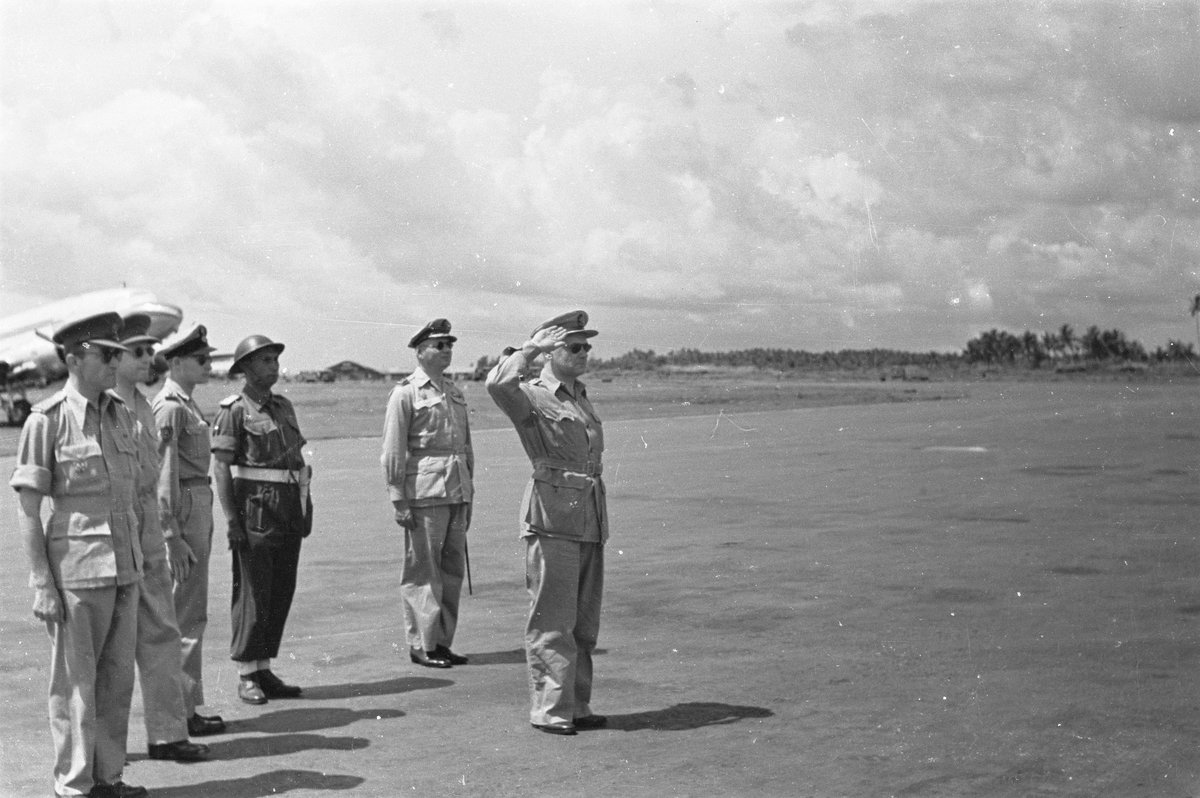
Kemayoran Airport Jakarta: Visiting Hours, Tickets, and Historical Significance Guide
Date: 14/06/2025
Introduction
Kemayoran Airport, a pivotal landmark in Jakarta’s aviation and urban history, represents Indonesia’s remarkable transformation from colonial rule to a dynamic, modern metropolis. Opened in 1940 to replace the Tjililitan airfield, Kemayoran quickly became the country’s main international gateway and a symbol of national sovereignty following independence in 1945. Located just 8 kilometers from Jakarta’s city center, this airport played a crucial role in connecting Indonesia to the world, hosting historic state visits and witnessing the evolution of commercial aviation (Kompas, 2024; Everything Explained).
The airport’s distinctive mid-20th-century architecture, blending functionalist design with local influences, further marked it as a beacon of technological progress and cultural pride. However, due to increasing urban congestion and capacity limitations, Kemayoran ceased operations in 1986, making way for Soekarno-Hatta International Airport. Today, its grounds have been transformed into the Kemayoran Central Business District and the Jakarta International Expo (JIExpo), with key heritage structures—like the preserved terminal building and air traffic control tower—celebrating its enduring legacy (Indonesia Design).
This comprehensive guide details Kemayoran’s history, cultural significance, current visitor experience, and practical tips for making the most of your visit to this iconic Jakarta destination.
Table of Contents
- Early Development and Strategic Importance
- Role in Indonesia’s Post-Independence Era
- Architectural and Cultural Significance
- Decline and Closure
- Legacy and Heritage Designation
- Transformation and Current Use
- Visitor Information: Visiting Hours, Tickets, and Tours
- Travel Tips and Nearby Attractions
- Visuals and Media
- Statistical Overview
- Preservation Challenges and Future Prospects
- FAQ: Frequently Asked Questions
- Explore More: Related Links
- Conclusion and Recommendations
Early Development and Strategic Importance
Kemayoran Airport was constructed in the late 1930s under Dutch colonial administration and officially opened in 1940. It replaced the aging Tjililitan airfield to accommodate increasing civil and military aviation needs. During World War II, the airport was seized by Japanese forces and used as a military base. Following Indonesia’s independence, Kemayoran emerged as the nation’s principal air hub—just 8 km from the city center—cementing its role as a vital link in Indonesia’s transportation network (Kompas, 2024).
Role in Indonesia’s Post-Independence Era
In the decades after independence, Kemayoran Airport became a gateway to the world. It handled both domestic and international flights, facilitating historic diplomatic visits, trade, and tourism. The airport expanded its facilities multiple times to reflect Indonesia’s aspirations, hosting flights from major Asian, European, and Australian airlines and serving as the landing point for countless dignitaries and tourists.
Architectural and Cultural Significance
Kemayoran’s terminal and control tower exemplified mid-century modernist architecture, fusing international style with Indonesian motifs. The airport was featured in films, literature, and newsreels as a symbol of modernity and national progress. The surrounding Kemayoran district rapidly grew into a hub for hotels, offices, and entertainment, catering to travelers and airline staff.
Decline and Closure
By the 1980s, Kemayoran faced severe congestion and noise pollution due to Jakarta’s rapid growth. Its central location limited the possibility of expansion, prompting the government to build Soekarno-Hatta International Airport, which opened in 1985. Kemayoran shifted to handling charter and general aviation flights before closing completely in 1986 (Kompas, 2024).
Legacy and Heritage Designation
Despite its closure, Kemayoran’s legacy endures. In 2024, the former terminal building was declared a cultural heritage site by the DKI Jakarta Provincial Government, recognizing its historical and educational value. This status seeks to ensure its preservation and foster public engagement with Jakarta’s aviation past (Kompas, 2024).
Transformation and Current Use
The former airport has been reinvented as the Kemayoran Central Business District and the site of JIExpo, Southeast Asia’s largest exhibition venue. While most runways and taxiways have been repurposed as roads and public spaces, the preserved terminal and air traffic control tower remain as historical landmarks (Indonesia Design). Street names and landmarks in the area continue to reflect its aviation heritage.
Visitor Information: Visiting Hours, Tickets, and Tours
- Heritage Terminal Building: Open daily, 9:00 AM–5:00 PM; free general admission.
- JIExpo: Operates daily, 9:00 AM–9:00 PM (hours may vary by event).
- Guided Tours: Offered occasionally by local heritage organizations and the city government—check the JIExpo official website or Jakarta tourism portals for schedules.
- Accessibility: The site is wheelchair accessible, with visitor plaques and a small heritage exhibit in the former terminal.
- Special Events: Some exhibitions or major events require pre-registration or tickets; check event-specific details online.
Travel Tips and Nearby Attractions
- Getting There: Accessible via TransJakarta buses, KRL Commuter Line (Kemayoran Station), taxis, and ride-hailing apps.
- Nearby Attractions:
- National Museum of Indonesia
- Kota Tua (Old Batavia)
- Ancol Dreamland
- Sunda Kelapa Port
- Photography: The preserved terminal and ATC tower, plus aviation-themed boulevards, are ideal for photography, especially in the early morning or late afternoon.
Visuals and Media
High-quality images of the terminal, control tower, and repurposed runways are available on Jakarta tourism and heritage platforms. Some offer virtual tours and interactive maps. Useful image alt texts include “Kemayoran Airport heritage building” and “Jakarta historical sites.”
Statistical Overview
- Opening Year: 1940
- Closure: 1986
- Distance from Center: 8 km
- Heritage Designation: 2024 (Terminal Building)
- Current Use: Business district, JIExpo, parks, heritage structures
Preservation Challenges and Future Prospects
Kemayoran’s heritage status brings both opportunities and challenges. Urban development pressures require ongoing advocacy for conservation, adaptive reuse, and public access. The city’s inclusion of Kemayoran among its official heritage sites reflects a broader commitment to preserving Jakarta’s identity (Kompas, 2024).
FAQ: Frequently Asked Questions
Q: Can I visit the Kemayoran Airport terminal?
A: Yes, it is open daily, 9:00 AM–5:00 PM, free of charge.
Q: Are there guided tours?
A: Offered occasionally—check official tourism and JIExpo websites for details.
Q: Is there an entrance fee?
A: General access is free; special events may require tickets.
Q: Is the site accessible for those with disabilities?
A: Yes, there are ramps and accessible facilities.
Q: What are the best times for photos?
A: Early morning and late afternoon.
Q: What else can I visit nearby?
A: National Museum, Kota Tua, and Ancol Dreamland.
Explore More: Related Links
- Jakarta Tourism Official Website
- DKI Jakarta Provincial Government Heritage Page
- JIExpo Official
- VOI Kemayoran Article
Conclusion and Recommendations
Kemayoran Airport stands as a symbol of Jakarta’s journey from colonial outpost to global city—its preserved structures and vibrant urban district embodying both historical memory and modern innovation. Whether you are drawn by its aviation legacy, architectural appeal, or urban energy, a visit to Kemayoran offers a unique, multifaceted experience.
Tips for Visitors:
- Check official sources for current hours and event schedules.
- Plan your route via public transport for convenience.
- Bring a camera for the site’s best photo opportunities.
- Download the Audiala app for guided tours, event notifications, and local tips.
Start your exploration of Jakarta’s rich history at Kemayoran—where the city’s past and present meet.
